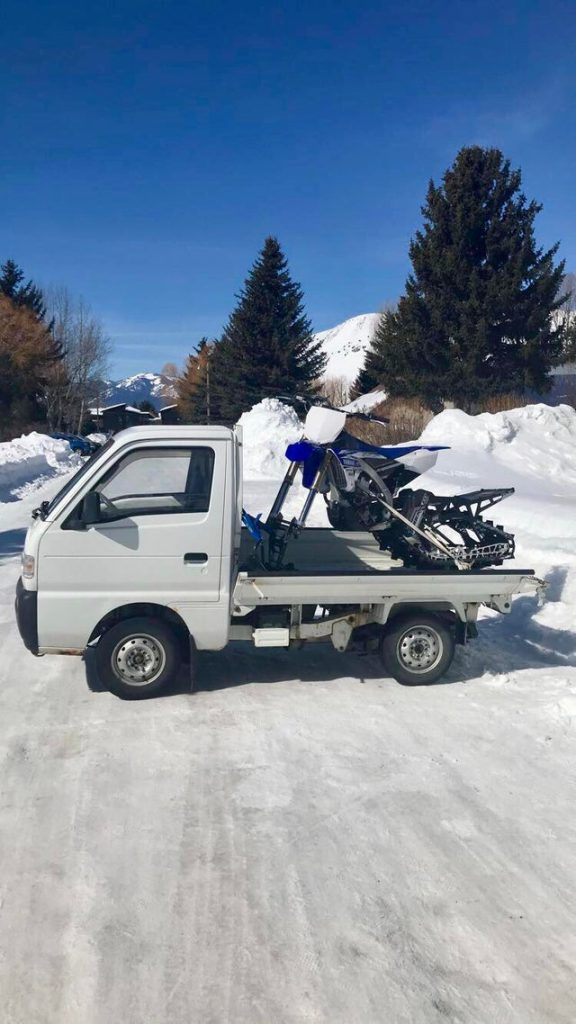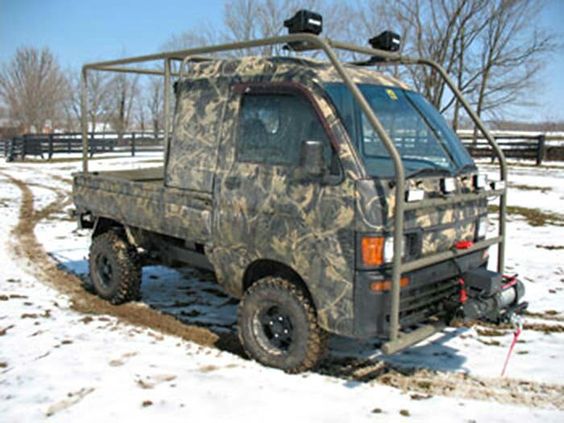Having Kei Trucks in Winter can be a challenge. With the cold weather, there are things which should be addressed. Careful consideration should be made to ensure that the vehicle’s engine, battery, and fluids are properly maintained. Before the winter weather sets in, ensure that you know the areas which will require maintenance. If you want to know the areas to address for Kei Trucks in Winter, read on.

Reduce ice damage
The first thing that you will need to do for your Kei truck is to reduce the likelihood of ice damage to your vehicle. One way in which you can do this is by using a car tarp or cover. Because of the small size of the Kei truck, you may use an ATV cover for the winter months.
Ensure that the cover that you choose covers your vehicle completely and that there are no loose edges. Should you find that you have loose corners, you will need to secure those loose edges to prevent any water and ice accumulation. If possible, store your Kei Truck in a warm and dry environment when not in use during winter.
Check your coolant and other fluids
Kei trucks are susceptible to freezing liquids. It is paramount that you check the fluids in the Kei truck before freezing weather sets in. Specifically, you will need to check the coolant in the Kei truck. The coolant should be at the proper level. You will want to ensure that the antifreeze to water ratio is correct. Should you have too much water in the antifreeze, it could lead to freezing within the radiator.
Should you find that the combination of antifreeze to water is not ideal, it is advised that you flush the system and add in new coolant. Kei trucks are small and so this process is not too expensive. If you do not know how to flush the system, take your Kei truck to any major mechanic.
Apart from checking the coolant, you should also check the other fluids in your Kei. Take note to change out the oil if it has been a while. Fresh oil is less likely to have grime and debris which can clog up the engine in the winter months.
Change your wiper blades for better drivability
If you will drive your Kei in the winter months, it is critical that you have ideal drivability. Consider using water deterring coatings on your windshield. Have new wiper blades put onto your Kei to help with visibility. You should not use the blades to clear ice from your windshield. Check your defrost on your Kei (if that option is available) to ensure that it works properly.
Depending upon the generation of Kei truck, you may also have the option of heated side mirrors. Any device which is heated or provides relief from the cold should be checked prior to any freezing weather.
Consider lifting your Kei
Because of the proximity to the ground, if you live in an area which receives snow, lift your Kei Truck. Lift Kits allow for you to raise the vehicle anywhere between 2 and 6”. The kits are relatively easy to install and can allow you to gain the extra clearance that you need to prevent the underbody of the vehicle from scrubbing the snow.
Besides the higher clearance from the ground, lifted Kei trucks can have thicker tires. The larger tires provide better traction in snow and inclement weather than the standard thin trucks. Also, because of the lift, when combined with the larger tires, the Kei increases the safety of the drive. This is done through better visibility, easier steering, and lower risk of snow/debris accumulation under the vehicle.
Check the tires
Winter months cause fluctuations in the tire pressure of your Kei Truck. Ensure that you have the proper air pressure in your tires. Regardless of whether you use larger tires during winter, you should have the proper pressure. If you do not use larger tires, consider using chains or other methods of winterizing your tires.
Check all of your tires treads before operating your vehicle during the winter. Treads should not be smooth. Smooth treads may cause drifting and sliding on ice and snow. Also, there should be no bulging or bubbles on the side of the tire. This is an indicator that the tire is weak. Tires should be in pristine condition to avoid collisions and blowouts and to maximize drivability.
Have the battery tested
Perhaps one of the biggest precautions that you can take is with the battery. Batteries are fickle with the cold. Check the battery to ensure that there is ample power and life left within it for the winter. Change out the battery or re-charge it. Kei truck batteries are not expensive, so any signs that your battery may be weak should be taken as an indicator that a new one is needed.
Regardless of the power that you have, take precautions for your Kei Truck battery. Have jumper cables in the truck to provide power with an emergency.
Warm up your engine
Many of the Kei trucks are from older generations where the technology to start and drive a vehicle was just not present. Therefore, give your engine time to warm up. You do not want to operate the vehicle if the engine is cold. This could cause for the engine to seize up and for major problems to occur. Usually, you only need about ten minutes for the engine to be ready to drive. However, check your oil temperature gauge to know. The gauge should read in the middle (neither hot nor cold) before you drive.

Kei Trucks in Winter
Kei trucks can provide you with the transportation that you need during the winter months. Ensure that you adhere to proper safety and maintenance before the cold weather sets in. As with any vehicle, should you have concerns about the safety or the functioning of your vehicle, bring the Kei Truck to a licensed mechanic.
